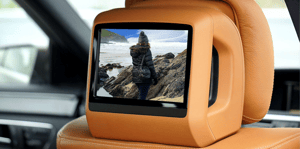You’ve been tearing through webpages and product descriptions in a frantic info search that’ll help you choose a material when you suddenly discover polycarbonate film.
Of course, when searching for product materials, your first question will likely be, “Why should I use this material?” Although a material may seem feasible, how do you know whether it will suit your project?
At Strouse, we specialize in transforming part drawings into finished products. Material selection is one of the most crucial aspects of designing a part, and you deserve to know whether polycarbonate film is a good material for you.
Today, we’ll cover the benefits of polycarbonate film so you understand the circumstances in which you might choose it.
What is Polycarbonate Film?
Polycarbonate (PC) film is a strong and clear thermoplastic used for graphics, printing, overlays, and other applications. Polycarbonate is found in backlit signs and panels (LED/LCD displays), ID cards, greenhouses, and more.
The Benefits of Using Polycarbonate Film
Polycarbonate film is a robust material used in multiple industries, so it has many benefits.
1. IMPACT RESISTANT
Polycarbonate film is best known for its monumental strength, exceeding many other films. The high tensile strength of polycarbonate makes it far more powerful than other plastic alternatives such as acrylic.
When it comes to withstanding heavy weights or absorbing impact energy, polycarbonate strength is no joke: it’s over 200 times stronger than the impact resistance of regular glass and 30 times stronger than acrylic.
Due to their high impact resistance and optical clarity, polycarbonate films are often used as additional shatter protection on windows.
2. TEMPERATURE RESISTANT
Polycarbonate film has a relatively wide temperature range for functionality.
The minimum long-term temperature resistance of a polycarbonate overlaminating film is typically around -40°F/C while the maximum long-term temperature is 250°F (121°C). In addition, the minimum application temperature is likely around 10°F (-12°C).
These temperatures are subject to change depending on the thickness of the polycarbonate, but generally speaking, it has a fairly wide temperature range. Polycarbonate is fire-resistant and self-extinguishing, meaning it does not burn with an open flame.
3. WIDE RANGE OF USE
From touchscreens to bulletproof glass, polycarbonate has a wide range of applications. Polycarbonate film is used in printed circuit boards, keypads, ID cards, electrical films, and more.
Your choice of polycarbonate relies largely on the application, as the different strengths and optical clarity levels will vary depending on the type of polycarbonate you need.
Drawbacks of Using Polycarbonate Film
There’s no such thing as a perfect material, and polycarbonate film is no exception.
One drawback to using polycarbonate film is that, despite its protective abilities, it’s susceptible to scratches. Occasionally, businesses use other materials to cover and protect the polycarbonate surface.
Another aspect to note is that many polycarbonate applications use thick versions of the material that can’t be accurately cut on a flatbed press. Thick versions of polycarbonate could be more challenging to process and require processes such as laser or waterjet cutting.
POLYCARBONATE AND PET
Manufacturers often compare polycarbonate to PET (Polyethylene terephthalate/polyester) because they share many of the same material characteristics. So, which should you choose?
Polycarbonate tends to be much more expensive than PET, so most businesses would instead use PET when possible. Yet, there are design scenarios where polycarbonate is the better choice.
For instance, polycarbonate film is easier to print on than PET. It’s also more suited to withstand heavy weights, temperature fluctuations, and an open flame. That being said, polycarbonate isn’t as chemically resistant.
Choosing a Suitable Film for Your Project
Picking the right material can be one of the most challenging aspects of getting started on a new project, but it doesn’t have to be the hair-pullingly frustrating process that many people come to expect.
Although you know your project requirements, you might not be aware of the manufacturing aspects of picking a particular material. For instance, the decision to automate your product assembly process could affect the thickness of the material you choose.
In addition, what happens after you find the right material? A flexible material converter can help you navigate the production process while giving you additional material and design insight to make it more manufacturable from years of experience.
If you’ve got a solution you want to build, it might be time to reach out and schedule a consultation with a flexible material converter. You can also learn more about the converting process through the resources available in our Learning Center.







